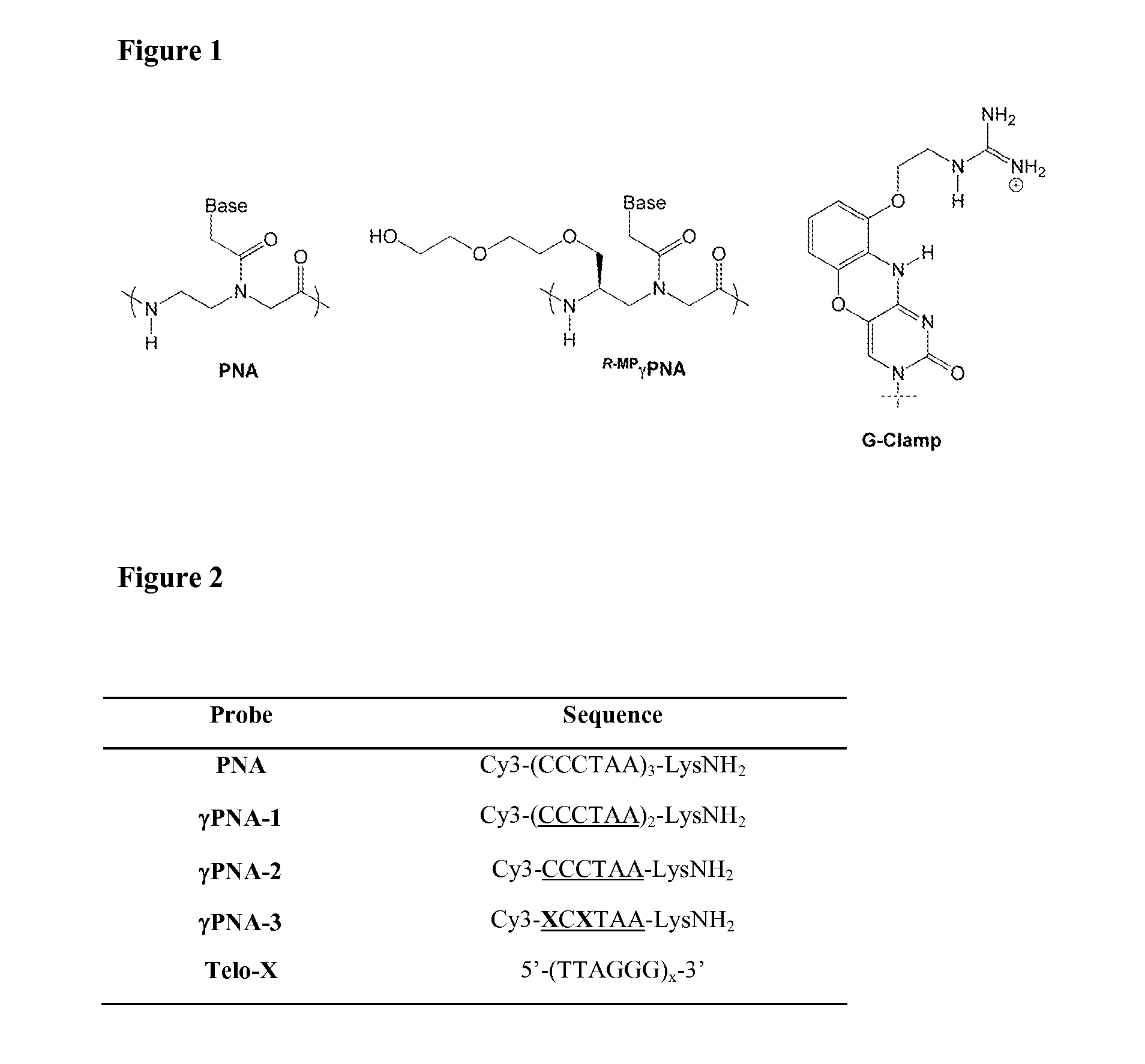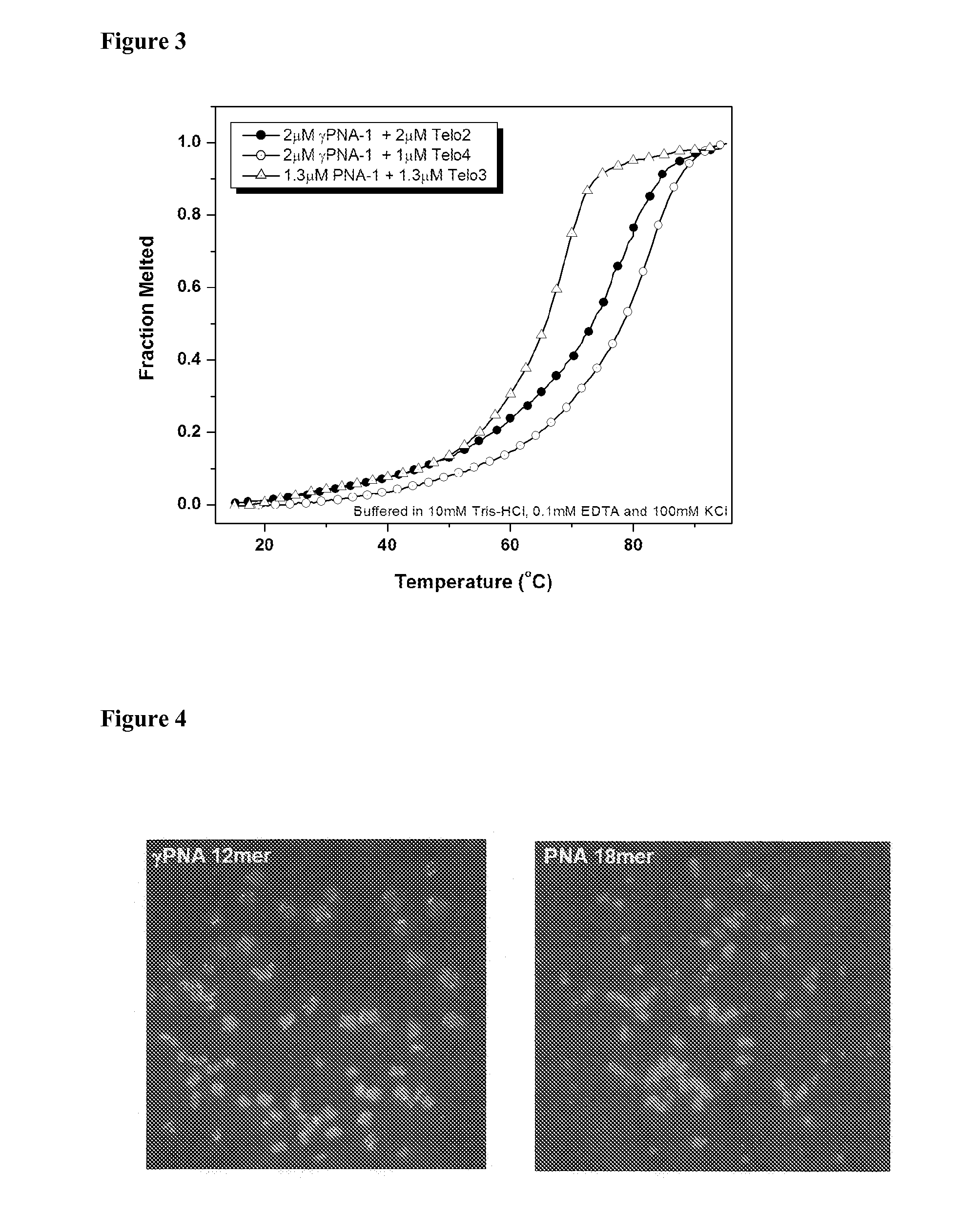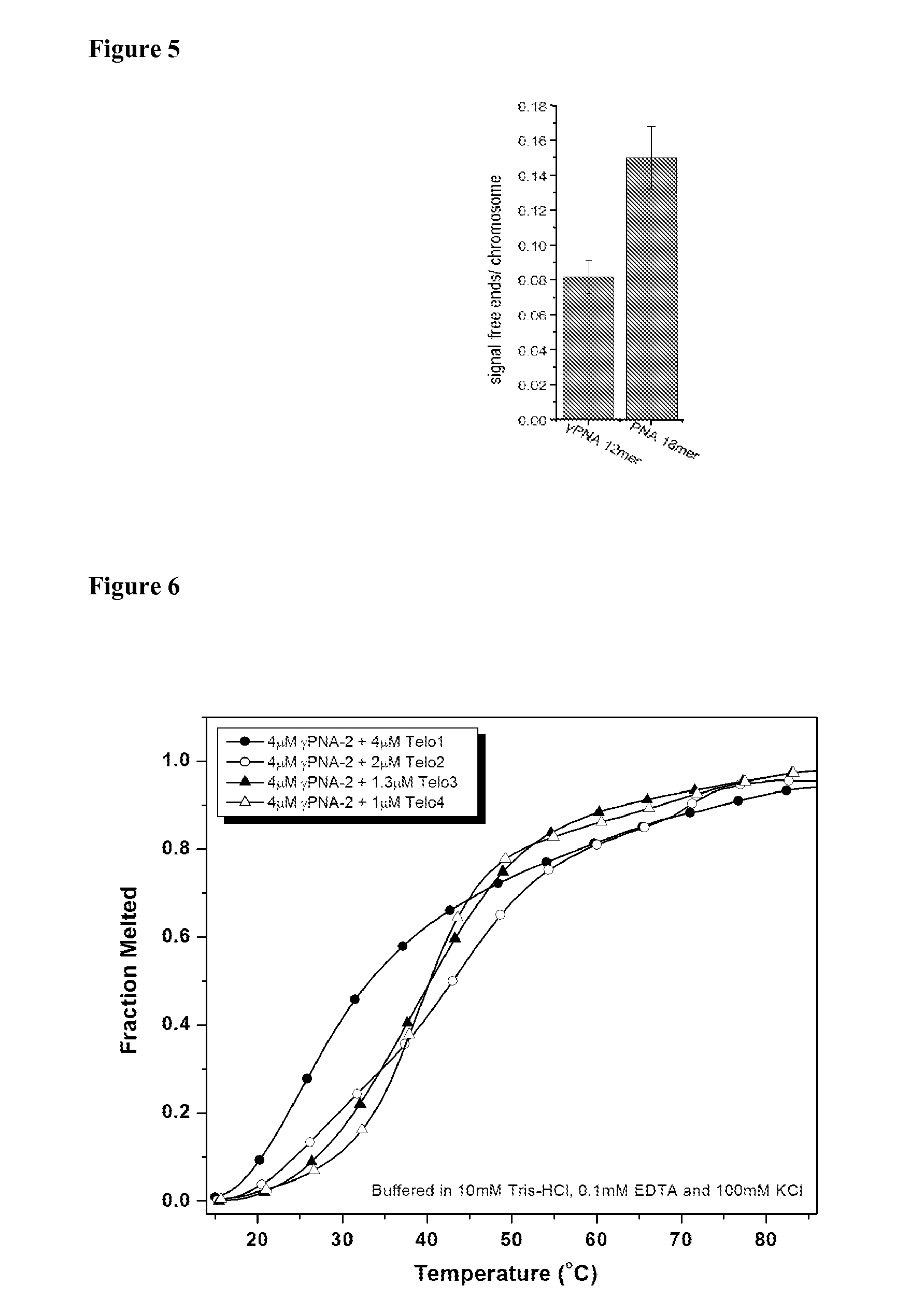Gamma-pna miniprobes for fluorescent labeling
a fluorescent labeling and gamma-pna technology, applied in the field of gamma-pna miniprobes for fluorescent labeling, can solve the problems of affecting the visualization of telomeres, weakening of fluorescent signals, and inability of probes to detect the presence of telomeres
- Summary
- Abstract
- Description
- Claims
- Application Information
AI Technical Summary
Benefits of technology
Problems solved by technology
Method used
Image
Examples
Embodiment Construction
[0024]Fluorescently labeled PNA probes have been used for detecting cellular DNA or RNA including, for the detection and imaging of telomeric DNA, which is found at the extreme ends of chromosomes in most organisms. Here the phrase “telomeric DNA” denotes a DNA-oligonucleotide that is characterized by the presence of a 5′-TTAGGG-3′ sequence repeated from thirteen times to several thousand times. See Capper, R. et at Genes Devel. 2007, 21, 2495-2508 and Calado, R.; Young, N. F1000 Med. Rep. 2012, 4:8.
[0025]Conventional fluorescent PNA probes used for detecting telomeric DNA in cell samples are 18 nucleobases in length. This length is necessary to permit the fluorescent PNA probe to effectively hybridize by non-covalent, sequence specific interactions over three contiguous repeat units of a human telomeric DNA. The terms “hybridization” or “hybridizing” refer to the process of establishing a non-covalent, sequence-specific interaction between two or more complementary strands of a DNA...
PUM
| Property | Measurement | Unit |
|---|---|---|
| Length | aaaaa | aaaaa |
| Resonance energy | aaaaa | aaaaa |
| Fluorescence | aaaaa | aaaaa |
Abstract
Description
Claims
Application Information
 Login to View More
Login to View More - R&D
- Intellectual Property
- Life Sciences
- Materials
- Tech Scout
- Unparalleled Data Quality
- Higher Quality Content
- 60% Fewer Hallucinations
Browse by: Latest US Patents, China's latest patents, Technical Efficacy Thesaurus, Application Domain, Technology Topic, Popular Technical Reports.
© 2025 PatSnap. All rights reserved.Legal|Privacy policy|Modern Slavery Act Transparency Statement|Sitemap|About US| Contact US: help@patsnap.com



